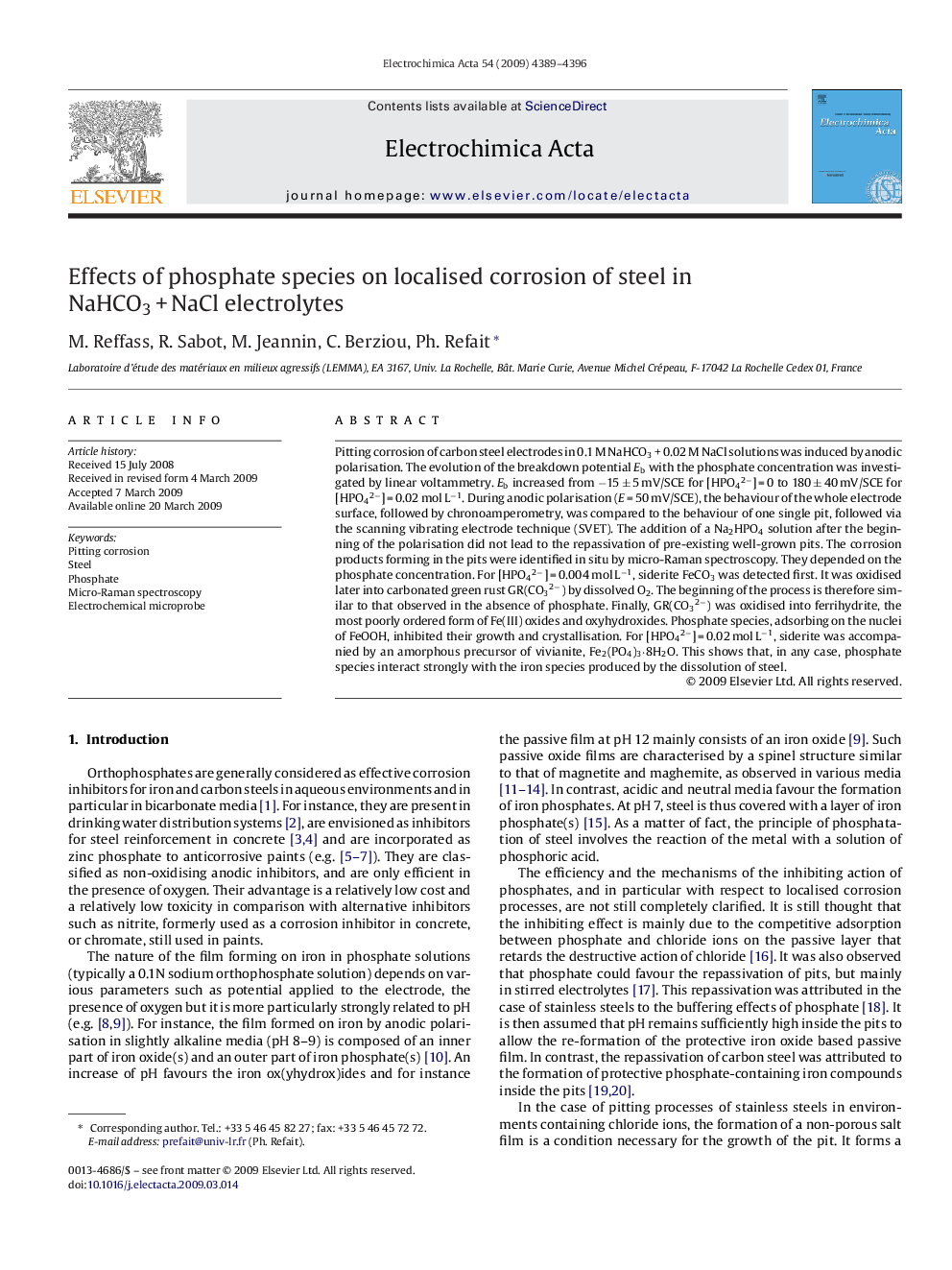| Article ID | Journal | Published Year | Pages | File Type |
|---|---|---|---|---|
| 193613 | Electrochimica Acta | 2009 | 8 Pages |
Pitting corrosion of carbon steel electrodes in 0.1 M NaHCO3 + 0.02 M NaCl solutions was induced by anodic polarisation. The evolution of the breakdown potential Eb with the phosphate concentration was investigated by linear voltammetry. Eb increased from −15 ± 5 mV/SCE for [HPO42−] = 0 to 180 ± 40 mV/SCE for [HPO42−] = 0.02 mol L−1. During anodic polarisation (E = 50 mV/SCE), the behaviour of the whole electrode surface, followed by chronoamperometry, was compared to the behaviour of one single pit, followed via the scanning vibrating electrode technique (SVET). The addition of a Na2HPO4 solution after the beginning of the polarisation did not lead to the repassivation of pre-existing well-grown pits. The corrosion products forming in the pits were identified in situ by micro-Raman spectroscopy. They depended on the phosphate concentration. For [HPO42−] = 0.004 mol L−1, siderite FeCO3 was detected first. It was oxidised later into carbonated green rust GR(CO32−) by dissolved O2. The beginning of the process is therefore similar to that observed in the absence of phosphate. Finally, GR(CO32−) was oxidised into ferrihydrite, the most poorly ordered form of Fe(III) oxides and oxyhydroxides. Phosphate species, adsorbing on the nuclei of FeOOH, inhibited their growth and crystallisation. For [HPO42−] = 0.02 mol L−1, siderite was accompanied by an amorphous precursor of vivianite, Fe2(PO4)3·8H2O. This shows that, in any case, phosphate species interact strongly with the iron species produced by the dissolution of steel.
